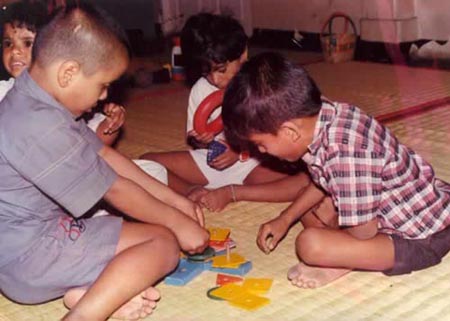
ICT integration in classroom has been instrumental in positively impacting learner performances over the years. With Government developing the National ICT policy, acknowledging and encouraging partnerships with the private sector initiatives, the country is on its way towards ICT convergence in the students’ life in a big way.
Children with special needs have always viewed the world very differently when compared to the so called ‘normal’. “The world is at your fingertips” was the famous statement that caused the buzz with the invention of mouse and the internet being just a click away. However for a child who is differently-abled, this is a distant dream. Technology has provided solutions to many of the obstacles in the path of inclusion; however apt application is the next big milestone to achieve especially in India. Several studies in the past have proven the positive impact of ICT on special children’s learning in classrooms (Detheridge, 1997; Wadell 2000).
But the point I would like to raise here is that, not only the children with special needs but every individual student has a different learning style per se, so when different learning styles/different abilities are all included within one classroom, we can call every classroom an ‘inclusive’ classroom and not necessarily the one which combines special children with other children. Having said that, the next question that arises is how to tailor the curriculum for the class of same aged learners with different abilities? Can we adapt technology to suit individual needs or can we provide an ecosystem to the child whereby she finds her own niche for learning and growth? Can we really prepare an inclusive classroom?
While the challenges in the path to accomplish these objectives include lack of awareness, accessibility and affordability to begin with; relevance of the curriculum to life of the child is another latent factor impacting the meaning of education. The basic underlying principles for a developmentally appropriate technology application and designing an ICT based classroom would include learning in a social context; play- based learning, fostering independence, non threatening/non-judgmental situations and opportunities for adult-child co-operation.
We already have wonderful inventions for special children, for instance softwares like SwitchIt patterns, Spot on games (for ASD), Screen Magnification system, Screen- reading program, Braille Translation Program (for visually impaired), Speech synthesizers which reads aloud written passages (for EBD) etc. In addition we do need to develop categories in order to provide child specific developments and solutions to enhance learning through technology. These categories can be shaped, based on the factors like learner preparedness, aptitude, emotional intelligence and cognitive styles to begin with.
Thus a whole resurgence and fresh thought has to go into curriculum designing for incorporating ICT in classrooms in India at the level policy formulation and implementation.



